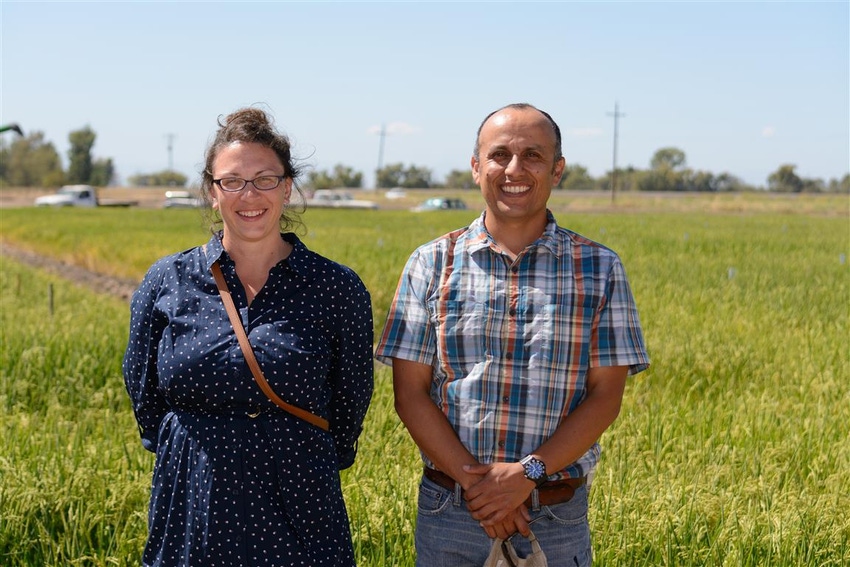
Weedy red rice, a considerable problem for rice growers in the South, may be in at least six fields in the northern California counties of Glenn and Butte.
Also known as red rice for its color, growers should be on the lookout for it and know the impact it can have in commercial rice.
University of California Cooperative Extension Rice Farm Advisor Whitney Brim-DeForest says weedy rice appeared in California in 2003, and maybe back as far as the 1930s and 1950s.
California has largely avoided the problem, possibly because of its continuously-flooded rice fields. The problem has resurfaced and farm advisors are trying to inform growers about the issue before it could get out of hand.
What is it?
Weedy red rice is considered one of the worst weeds in rice growing regions around the world. In 2008, surveys in Arkansas revealed 62 percent of the rice crop was infested with the weed.
One of the problems with weedy red rice is that it looks similar to cultivated rice, making it difficult to spot.
Beyond that, weedy red rice has characteristics that can reduce yield and rice quality by contaminating seed lots and requiring extra milling.
A University of California website can be found at http://rice.ucanr.edu/Weedy_Red_Rice/ with information on the topic.
Another problem with weedy rice is the inability to control it with conventional herbicides. Brim-DeForest says common herbicides that could control the weed also can kill the rice because both belong to the same genus.
Additionally, weedy red rice tends to shatter, meaning it falls off the panicle rather than remain there for harvest. This is how the weed propagates. It also has a dormancy period, according to UCCE Rice Farm Advisor Luis Espino, meaning seeds can lay dormant for two years and in the third germinate and reappear in the rice field.
Rice specialists say the best control method is to attempt to keep it out of fields in the first place. To do this the University of California has a list of best management practices that include, but are not limited to:
Equipment entering California from areas known to have red rice will be subject to inspection by county agricultural department staff;
Use only certified seed;
Do not use an infested field as a seed field;
Red rice plants are easiest to identify at the heading stage – scout fields at that time;
For minor infestations remove red rice plants from the field. Be careful not to shatter red rice seeds while handling headed plants. Bag the headed plants before transport from the field and dispose of them by burning them or placing in a dumpster;
Keep water on the field with no drainage during the season. Red rice germination is promoted when water is drained from the field for stand establishment and foliar herbicide applications;
If possible, harvest affected fields last in the sequence of harvesting and do not move equipment into uninfected fields; and,
Straw should be cut as low as possible to the ground to facilitate effective burning.
According to Brim-DeForest, a good, hot burn can destroy red rice seed.
California growers are allowed to burn a maximum of 25 percent of their rice fields to control blast and fungal diseases, according to Paul Buttner, manager of environmental affairs for the California Rice Commission (CRC).
Weedy red rice control was recently folded into this program, Buttner says.
It still requires a grower to obtain a burn permit.
The UC recommends that growers with known red rice populations should prioritize those fields when determining which fields to burn.
The UC also recommended to avoid fall tillage as this may bury red rice seed.
About the Author(s)
You May Also Like






